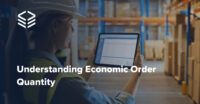The Amazon marketplace accounts for billions of dollars in sales every year, and is an important sales channel for many brands. Many of these brands rely on Fulfillment by Amazon (FBA), which makes them eligible for Prime delivery and offers other benefits to those that sell on the marketplace.
Though often necessary, FBA can also be expensive, and subjects merchants to the limitations of the service, including capacity limits and expensive inventory and long term storage fees. Seasonal merchandise often doesn’t meet yearly capacity requirements, and FBA refuses all mentable inventory for more than half the year. These fees and limitations can often push ecommerce brands to seek out Amazon FBA alternatives.
Merchants using FBA can reduce unforeseen costs and delays by consolidating inventory and preparation ahead of inbounding to FBA with Flowspace.
With the nationwide scale and infinite capacity of the Flowspace Network, products can be prepared and stored at fulfillment centers across the country, speeding up replenishment and cutting down the amount of time goods need to be stored in expensive Amazon warehouses.
Flowspace also offers Amazon integration and other native integrations with Amazon Seller Central, Shopify, and other e-commerce marketplaces that enable direct to consumer fulfillment, providing FBA contingencies and diversification for omnichannel strategies.
To find out more about how Flowspace can help you run your FBA business, get in touch with us.





